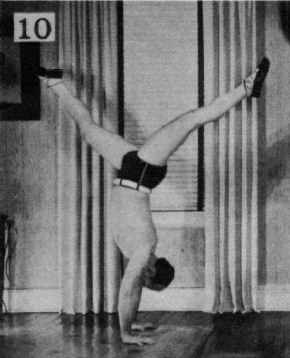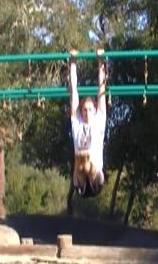The quality of the questions coming in has, for the most part improved.
Here’s a great one on planche training from Josh,
“hey ive just learnt about planche a few weeks back and have looked up many ways of progression towards a full planche, i know it is not an over night thing but what would you recommend to do for progression? i can just hold a tuck planche for about 10 seconds but im not very far off the ground”
There are a few different ways you can go about this.
I’ll give you one of the best ways to do it. I was just re-reading The True Art and Science of Hand Balancing and Bob Jones talks a good amount about it on the chapter about the Planche.
The planche is such a difficult feat to perform because of the enormous leverage against the shoulders. On top of this you have to keep your body completely straight with no support except by the arms.
How do you work up to this? By making it easier. And that means lessening the leverage.
Here’s two ways you can do that. Spread the legs as wide as you can. And bending the knees. Combine these to lower the leverage even more.
Even like this though, most people will not be able to hold a planche position. It still requires great shoulder and upper body strength.
So work it as far as you can go. Lower from a handstand as far into the planche as you can, with the bent and spread legs.
Work this over time and you’ll build the strength you need.
If you want more on the planche get the book here. Plus you’ll learn what a true planche looks like and why most people are doing it wrong.
Good Luck and Good Hand Balancing,
Logan Christopher









